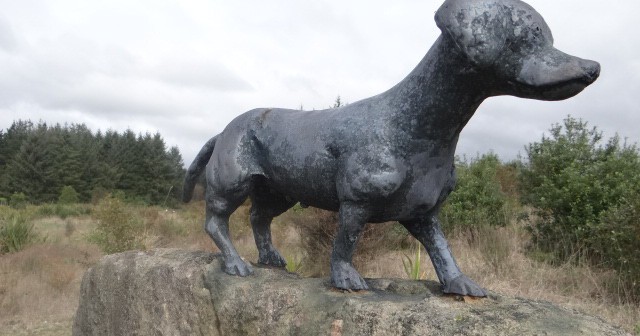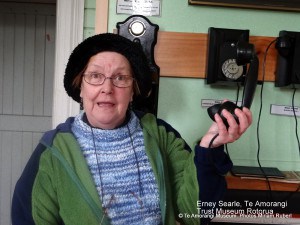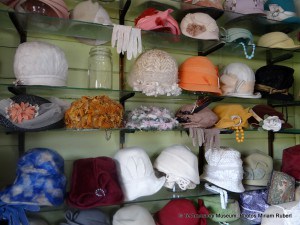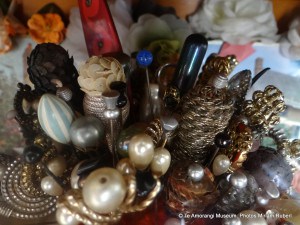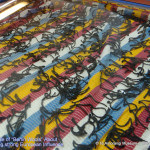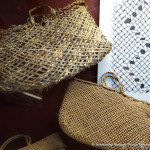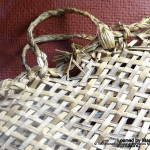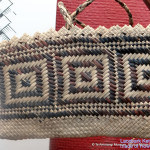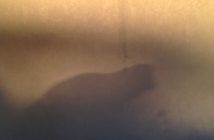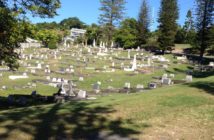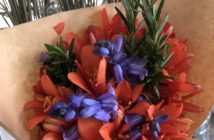Harawene was a Rotorua icon. A stray dog that decided to make her home on the side of busy Te Ngae Rd. 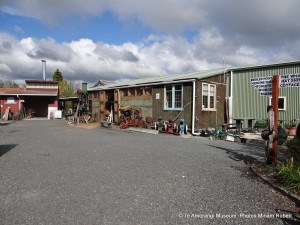
 Upon her demise, funds were collected to erect a life-size statue of the terrier, where she stands today – donning a Santa hat each Christmas. Harawene points the way directly off Te Ngae Road, down Robinson Road, to another world, the world of the Te Amorangi Museum.
Upon her demise, funds were collected to erect a life-size statue of the terrier, where she stands today – donning a Santa hat each Christmas. Harawene points the way directly off Te Ngae Road, down Robinson Road, to another world, the world of the Te Amorangi Museum.
Te Amorangi Museum is worlds apart from Rotorua ‘s Te Whare Taonga o Te Arawa, otherwise known as The Rotorua Museum, and so adds immensely to recalling days gone by when our peoples came to these shores by canoe and ship, while providing a highly informative and evolving museum of high conservational quality.
As such, part of its brilliance is not just the 40+sites, buildings and working engines of yesteryear serviced by the heroic ones, a dedicated volunteer team of enthusiastic historians and retired tradesmen and one woman, Erney Searle, a qualified Telegraphist. It’s that the trappings of every aspect of bygone ways of life is carefully displayed and maintained, of conversations between Maori and others, with evidence of an artful eye every way one turns.
The first person I encountered on arriving was Erney. With sparkling eyes, Erney immediately launched into recounting the long journey from the distant days when mothers laid out stones in patterns as messages for their children, to the first programmer, Aida Lovelace (1815 – 1852) an English mathematician and writer, chiefly known for her work on Charles Babbage’s early mechanical general-purpose computer, the Analytical Engine.
Erney explained the difficulties faced by machines running on steam and so delaying the invention of the
first computer, which was to undertake first tally of votes in America. But it was learning to use valves that opened up the world of communications – transistors made things smaller, you could turn on or off, and know whether it was on or off. Morse ensued. Onwards to the establishment of the first telegraphic cable between Liverpool, England and New York. “The Police were in London, who had a connection to Greenwich Maritime, were able to get in touch with New York via the Liverpool docks, and so the first international criminal, Crippen, was captured, along with his mistress, dressed as a man to avoid raising suspicion !”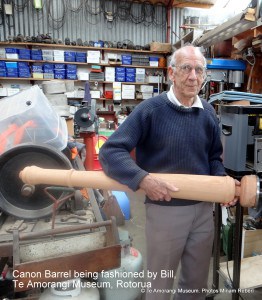
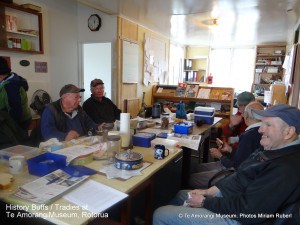
So is this place all about old boys and their toys ? Not at all. Sure, there’s Bill, currently making a facsimile cannon barrel, Peter bent over an arc welder Ian who is into steam and anything motorised ; busy stuff happening everywhere. But there are also so many other delights.
There’s the Hat Shop, crammed with every thing imaginable associated with hats … paper and woven patterns for making hats, hat boxes, glorious hat pins, artificial flowers,,, other frippery that goes with the hats.
Then too there is the Haberdashery, filled with fabrics, cottons, patterns, ribbons, sewing machines, of old, machines for sewing shoes and saddles, and so much more, and barely done justice with photographs.
 On to the General Store, the modest home set up with the necessities of a small family, complete with roughly darned socks – and an extraordinary collection of paintings and prints of Tarawera, the Pink and the White Terraces, all in handsome wooden frames
On to the General Store, the modest home set up with the necessities of a small family, complete with roughly darned socks – and an extraordinary collection of paintings and prints of Tarawera, the Pink and the White Terraces, all in handsome wooden frames
Many buildings went unexplored, the hours ticking by 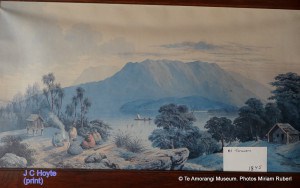 and TODAY making its demands over the phone – the slick, portable cellphone, easily carried by women, unlike those early heavy black ones, especially weighted so that women would not talk so long – but not missing out the Rotorua Gaol, built in 1905, and originally located behind the Police Station on Tutanekai St, and used as a prison until 1965.
and TODAY making its demands over the phone – the slick, portable cellphone, easily carried by women, unlike those early heavy black ones, especially weighted so that women would not talk so long – but not missing out the Rotorua Gaol, built in 1905, and originally located behind the Police Station on Tutanekai St, and used as a prison until 1965.
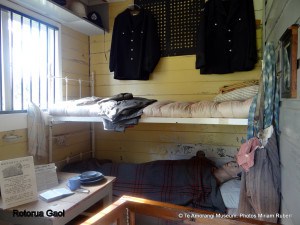 Yes ! 1965!! Then it consisted of 2 cells and a passageway. At that time the building was moved to Rotomahana, and used as the WDFF Clubrooms until 1987, and gifted to Te Amorangi Trust Museum in 1988. Considerable history about the construction of the building, and the routines of prisoners and jailers alike is on display.
Yes ! 1965!! Then it consisted of 2 cells and a passageway. At that time the building was moved to Rotomahana, and used as the WDFF Clubrooms until 1987, and gifted to Te Amorangi Trust Museum in 1988. Considerable history about the construction of the building, and the routines of prisoners and jailers alike is on display.
From here, to the building housing the Sheward Collection. Many treasures, particularly following the Tarawera eruption, are carefully displayed and lit in here. Among them these Korowai, Kete and carvings
You will not regret a visit – artist or not, man, woman and child alike will find a wealth of delight here.
They can be contacted about their open hours etc at :
Phone : 07 345 9525
email : teamorangimuseum@xtra.co.nz
web : www.rotoruaheritage.co.nz
FB : Te Amorangi Museum Rotorua New Zealand
Miriam Ruberl. Miriam is a Rotorua-based established artist and arts tutor. She is the Rotorua Correspondent for ARTbop and attends a wide variety of events as well as providing insights into features and exhibitions in the Rotorua District. Miriam’s article Harawene Points the Way was written by Miriam in September 2015.


